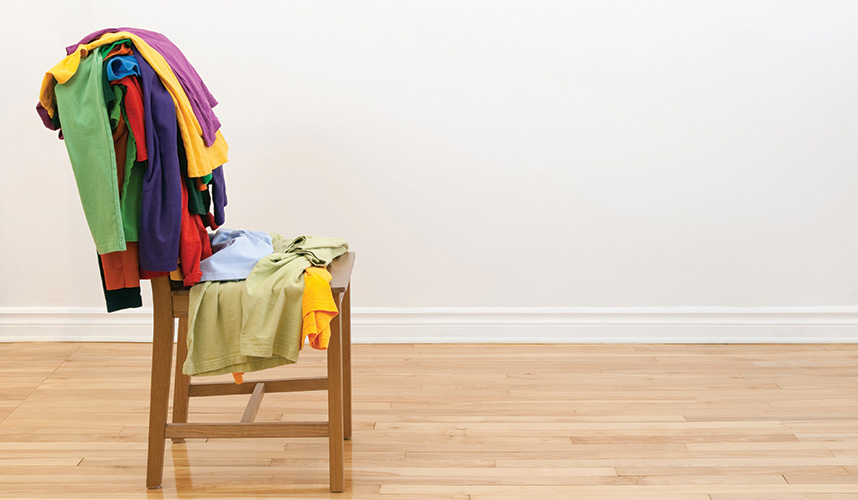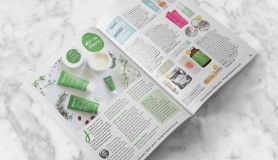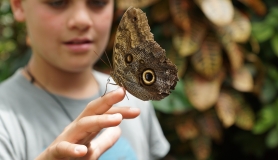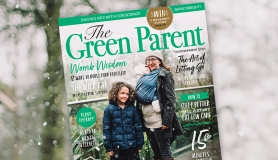I’m a firm believer in stuff. When objects in your home are useful and cared for then they earn their right to be with you. However, when mysterious piles of objects begin to build in the corner of the room or boxes of memories gather dust in the attic then you know you’re in trouble.
When you’re heavily into recycling, as I am, then this can go hand-in-hand with hoarding. You rescue something with all good intentions and it ends up on the pile with all the other junk at home. It doesn’t take long before you realise that your home becomes the skip! My husband and I inherited the contents of half a house, left to us by my late father-in-law. He owned many beautiful items, and an assortment of antiques. Rather than sell or donate the items we couldn’t accommodate we extended the house…can you believe it? It sounds so silly now.
Do you need help too? Here are a few ideas to get you started.
- Walk around the house with a basket or bag and see how many things you can donate to the local charity shop right now. Can you fill a basket right up? Challenge yourself.
- Tidy a drawer. Tip everything out onto a bed or table and wash out the drawer before sorting and throwing. Donate and recycle wherever you can; then place everything back. One small project helps inspire you to start another.
- Organise a garage/attic clearing weekend and invite family and friends round to help. People will do anything for food so make sure you have a running buffet available and make it fun by playing music as if you had organised any sort of party. When your helpful neighbour takes a shine to your third/spare lawn-mower, hand it over as payment for tidying services! Let helpers drive things right to the recycling centre and charity shop.
- If you’re keeping things you inherited just to pass on to someone else one day, consider doing it today. Your horse-riding niece might not value your ancient stamp collection but might be glad of the cash if you let her sell the gift. Hand over items with love, unconditionally, and then the lucky recipient has permission to do whatever they want with it. It’s literally no longer your business! Take photographs of inherited items rather than the object itself. Great grandma would prefer you used the money you made from the old brooch you no longer wear, and buy a pendant that you love and reminds you of her. If she were still alive, even grandma wouldn’t be wearing that brooch now. Don’t let guilt get in the way of good choices.
- Pretty boxes from gift sets make the most wonderful storage for small items like make-up and jewellery if you line them up inside a drawer or bigger box.
- • Other objects do double-duty. I love my display of white jugs on the kitchen shelves. But they are also used for flowers, milk, custard, gravy and cutlery.
- • Pretty china cups make a beautiful shabby-chic display of jewellery on your dressing table; cut glasses are wonderful for hanging earrings from and pride-of-place goes to my mug-tree now necklace stand!
- • Great inspiration for teens; recycle Perspex boxes (the sort used for chocolates or stationery); perfect for cosmetics, nail varnishes and hair accessories.
Organising your belongings is wonderful but don’t be tempted to rush out and buy more storage. Look around your home and ask yourself, what do I already own that I can re-purpose? Much of my storage began life doing something else entirely. Likewise don’t spend hours organising storage of things which you’d do better to get rid of altogether. Downsize your sewing box, your craft storage and your hobbies ... and you might find you’re able to downsize your house!
Jacky is the author of ‘An Angel Saved My Life’ and ‘An Angel By My Side’. Be an Angel, Clear that Clutter (Findhorn Press) is her first book on Clutter Clearing. Her house is tidy… most of the time! See jackynewcomb.com.
“I re-use old ice-cream boxes and place stickers with the name of the contents (bricks, dolls etc) or pictures on the outside to encourage little ones to tidy up”
TOYS
Children’s toys present a unique challenge. Never throw away or donate children’s toys without permission but do encourage them to make sensible choices about their own possessions. Toddlers are happy to give to ‘children who don’t have any toys’. I still get letters from anxious adults whose well-meaning parents donated their favourite doll or teddy when they were a child.
- I have children’s toys at my house for when my young granddaughter comes to visit. I like to keep spares in plastic tubs (with lids, and well labelled), which I store in the cupboard. You don’t have to have everything out at once. Recycling a few tubs of toys makes it seem like Christmas when something “new” appears after a short absence. It also means a clearer and more clutter-free room.
- Everything has a home. I love baskets but brightly coloured plastic boxes are great too. I re-use old ice-cream boxes and place stickers with the name of the contents (bricks, dolls etc) or pictures on the outside to encourage little ones to tidy up.
PHOTOGRAPHS
Because of the emotional attachment photographs are best sorted several times. Do a quick sweep and remove everything that is smudged, damaged, out of focus or has a thumb-print or hair across the image.
- Throw away photographs of views, especially if you can’t remember where they are from. Or ask at your local school or college if the art-group can make use of them.
- Place photographs into piles of each person rather than try and sort them into time-zones. How many photographs do you need of each person? Maybe 15 or 20 photographs of closest relatives; perhaps 5 of more distant relatives and 1 or 2 of old friends. Make your own rules. Pile up spare photographs of each person, add their address to a large envelope and post them back!
- With deceased loved ones I have another ‘rule’. If the photo makes me cry or makes me feel sad I get rid of the image. If it makes me happy then I keep it.
- Organise your photographs, a few at a time whilst you watch a TV programme or chat to friends. It’s easier when you have a distraction and you’ll work quicker. Give yourself 3-5 seconds to decide. Don’t spend too long on each image. If you get overwhelmed, stop, congratulate yourself on what you have managed to do and come back another time.







